Next-Generation Rain Gear
The advent of new-age technology and advanced material design makes a world of difference in the products we use daily. From cell phones to clothing, there's an upswing of improvements in every aspect of our lives. The next-generation rain gear is a brilliant example of this surge in advanced product development. Designed meticulously to combat the dilemmas of traditional rainwear, this latest gear ensures better protection and comfort during those dreary rainy days.
Improved Weather Protection
A major downfall of traditional rain gear was its inefficient weather protection. While they promised to keep you dry, the reality was often a soggy experience. The next-generation rain gear offers a well-rounded approach to weather protection. Which means, now you can bid adieu to those damp disappointments.
- Complete water resistance: Unlike regular rain gear, the next-gen models come with high-grade waterproofing. You can now wade through heavy rains without worrying about seepage.
- Protective lining: In addition to waterproof outer shells, these raincoats incorporate protective lining inside. This adds an extra layer of protection, keeping you not just dry, but warm as well.
- Zipped pockets: Raincoats with simple pocket designs leave your belongings vulnerable to moisture exposure. Next-generation rain gear comes with zipped pockets, your phone and wallet will stay as dry as you.
Rain-Resistant Fabric and Zippers
The essence of next-generation rain gear lies in the materials used. A hallmark feature is the improved fabric and zippers.
- Breathable fabric: The use of advanced and breathable fabrics allows for superior comfort and functionality, reducing condensation inside the jacket, keeping you dry, inside out.
- Rain-resistant zippers: Featuring specially designed rain-resistant zippers, the next-gen gear provides enhanced protection against inclement weather conditions. Your valuables would remain secure, as water slips over the closed teeth of these zippers, instead of seeping inside.
So, don't let the gloomy skies dampen your spirits. Embrace the rains with much enthusiasm as sunshine, sporting this next-generation rain gear. It's not just about staying dry anymore, it's about staying comfortably dry. This gear promises to keep you and your belongings safely secluded from the rain, making those rainy days a bit more delightful.
Laminate and Coating Constructions
Exploring the world of outdoor gear can be an interesting journey filled with a multitude of technicalities. One such technical aspect that's often overlooked but plays a vital role in the overall quality of the product is "laminate and coating constructions." This section will delve into the two core variants—2-layer jackets and waterproof breathable membranes.
2-Layer Jackets
Anything but plain, 2-layer jackets often form the backbone of rain jackets in the outdoor industry. The two layers, as the name suggests, encompass a protective outer layer coated with a waterproof finish, working together to offer long-lasting comfort in wet conditions. Resilient and adept, these jackets fight off water, providing an effective barrier against rain and drizzles.
They offer some unique benefits, such as:
- Better breathability compared to single-layer jackets.
- Enhanced durability to handle tough outdoor conditions.
- A surprisingly light construction for easier mobility.
Waterproof and Breathable Membranes
Transitioning from the superficial layers, let's dip our toes into the world of waterproof and breathable membranes. These membranes serve a particular function: They allow your body's excess heat and moisture to escape while preventing external water molecules from seeping in.
Highly technical yet genuinely sophisticated, waterproof and breathable membranes are:
- Engineered to offer microscopic pores, smaller than rain droplets but larger than sweat vapor. This ingenious design effectively keeps you dry, both inside and out.
- Commonly used in the creation of top-rated rain jackets. These provide a waterproof shield while remaining breathable.
And there you have it—a quick yet comprehensive overview of the key elements that craft the much-loved outdoor gear. Understanding these constructions can truly enhance your appreciation of the product and aid in your selection process. So the next time you're on the hunt for the perfect rain jacket, remember to consider not just the aesthetics and size but also the intricate layers and membranes that lie within.
Role of PVC in Rain Gear
The idea of getting caught up in the rain without the right gear can turn the refreshing experience into an inconvenient one. Fortunately, the innovative use of Polyvinyl Chloride, famously known as PVC, in making rain gear, has proven to be a game changer. PVC rain gears, like raincoats and boots, are not only waterproof but are also impressively durable, earning the load-bearing responsibility of keeping us dry during wet weather conditions.
Excellent Waterproofing
Have you ever wondered what makes your favorite raincoat repel water? It's all about PVC. Its innate water-resistant properties make PVC the ideal material in the production of rain gear.
When you see droplets of water forming and sliding off your rain gear, that's PVC flexing its water-repellent muscle. It's no big wonder why rainwear made of PVC dominates the market—it's like your personal armor against the rain! The best part? They retain their waterproof qualities for a pretty long time.
Durability
Besides the unmatched waterproofing ability, PVC rain gear stands out for its durability. Whether you're talking about children who play in the rain or adults who have to contend with daily commutes during rainy seasons, everyone needs something that can withstand some rough handling, and PVC is perfect for it.
PVC reigns supreme when it comes to resistance against tearing and abrasion. That's because PVC inherently has a high level of durability, thanks to its strong plastic polymer composition. So, a raincoat or pair of rain boots made from PVC is likely to serve you much longer than those made from other materials.
In this era where everyone's rooting for items that offer long-term utility, the use of PVC in making rain gear comes across as one clever strategy. And, when you add the element of comfort that comes with these PVC-made gears, you have all the right reasons to embrace PVC.
Next time you find yourself shopping for rain gear, remember, there's no compromise to its quality that PVC brings to the table—providing excellent waterproofing capabilities and impressive durability.
Technology Advancements in Rain Gear
From sudden downpours during your hike to the drizzle on your way to work, rain can quickly go from a gentle conditioner to a drenching inconvenience. Thankfully, technology advancements in rain gear make inclement weather less daunting and even a bit more fun. This article will examine two significant breakthroughs in the field: waterproof Bluetooth-enabled jackets and breathable rain pants.
Waterproof Bluetooth-Enabled Jackets
Imagine being caught in a rainstorm while hiking up a mountain trail. Traditionally, you'd have to pause your journey, take off your backpack, and pull out your phone to change the song or answer a call. Not anymore. With waterproof Bluetooth-enabled jackets, the future is here.
These jackets come equipped with tiny Bluetooth speakers built into the collar, allowing users to listen to music, podcasts, or take calls hands-free, even in the most unforgiving rain. The technology is advanced enough to maintain excellent sound quality without causing any discomfort to the wearer.
The majority of these jackets also offer impressive durability, having been tested in extreme weather conditions. Plus, they are not just technically smart; they also look fashionable. With sleek designs and multiple colors, these jackets bring a much-needed blend of style and sophistication.
Breathable Rain Pants
Stepping out in heavy rain can get uncomfortable fast, especially when you're wearing rubber rain suits or thick waxed trousers to keep dry. But thanks to advancements in fabric technology, breathable rain pants are changing the game.
These pants are constructed with intelligent materials that permit air circulation while blocking out rain. They are designed to keep you dry without causing excessive sweat, a common issue with other types of rain gear.
One of the main distinctions of these pants is their ability to balance protection against rain while regulating body temperature. No more feeling like your legs are steamed in a sauna every time you jostle through rainy weather. Breathability, in this context, implies a level of comfort that has never been seen in rain gear before.
One might wonder what's next in the evolution of rain gear technology. For a sneak peek into the future, check out this fascinating blog post about Rain Gear Innovations. It presents a vision of rain gear developments that hold significant potential to transform the way we take on unpredictable weather.
As we progress, it's clear that the rain gear market is undergoing unprecedented changes, with more comfortable, tech-savvy, and stylish options available than ever. So, rain or shine, these innovations ensure that nothing spoils your outdoor activities and adventures.
Innovations in Waterproof Fabrics
In the inevitable clash between the elemental forces of nature and the desires of mankind to keep dry and comfortable, innovations in waterproof fabrics have emerged as an essential line of defense. Whether for a high-altitude mountaineer braving snowstorms or an average city dweller tackling downpours during commutes, the demand for capable, water-resistant materials has led to significant technological advancements. Let's delve deeper into some of these groundbreaking innovations that effectively shield us from moisture yet maintain breathability and durability.
Gore-Tex
The first noteworthy innovation is Gore-Tex, a fabric that has made a significant impact in the world of waterproof materials. This fabric is essentially a thin layer of expanded polytetrafluoroethylene (ePTFE) with millions of tiny pores per square inch. These pores are large enough to allow sweat vapor to escape, yet so tiny that water droplets from rain or snow can't penetrate, thereby offering a perfect blend of breathability and waterproof capabilities.
ePTFE Membranes
Following closely behind Gore-Tex is the use of expanded polytetrafluoroethylene (ePTFE) membranes. These are engineered at a microscopic level, employing innovative nanotechnology. ePTFE membranes are fine-tuned to create fabrics that are not just waterproof but also breathable and lightweight, boosting the comfort of anyone wearing them.
Smart Seal Technology
An advanced innovation comes in the form of Smart Seal Technology. Unlike traditional methods that merely apply a waterproof coating to the fabric, Smart Seal Technology infuses the fabric's fibers with water-repelling properties. This method ensures that the fabric retains its water-resistant capabilities even after numerous washes or prolonged exposure to rain.
DWR (Durable Water Repellent) Treatments
Lastly, Durable Water Repellent (DWR) treatments add another layer of water resistance to fabrics. The treatment protects the outer fabric layer by preventing water absorption, thereby allowing the fabric to remain light and breathable. DWR treatments enhance the durability of the fabric and increase the life of your waterproof garment.
In conclusion, innovations in waterproof fabrics such as Gore-Tex, ePTFE membranes, Smart Seal Technology, and DWR treatments provide advanced protection against water, whether you're scaling the rugged heights of Mount Everest or simply stepping out for an errand run on a rainy day. So next time you find yourself caught in the rain, remember the science that keeps you dry.
Innovations in Membrane Technologies
In the evolving world of material sciences, one area that has been receiving substantial attention is membrane technologies. Linking scientific innovation with practical applications, these ingenious advancements play a pivotal role in diverse sectors, from outdoor clothing to environmental engineering. Beyond their conventional functions, membranes have been redefined, delivering out-of-the-box solutions and superior performance characteristics. This section will walk you through fascinating applications of membranes in outdoor clothing, followed by a sneak peek into the latest advancements in this field.
Applications in Outdoor Clothing
The world of outdoor clothing is seeing a dramatic shift, thanks to the advent of advanced membrane technologies. For all you adventurous souls out there, innovative membranes are ensuring that nothing rains on your parade—quite literally. Offering unparalleled waterproofing and windproofing properties, membranes have become an essential component of rain gear. A hallmark of this change is technologies like Voormi's, which are pushing the boundaries of what outdoor clothing can achieve.
Let's take a closer look at exactly how membrane technologies are changing the game:
- Improved Functionality: Superior membrane technologies mean enhanced breathability, wind-resistance, and waterproofing, ensuring you stay dry and comfortable in even the harshest weather conditions.
- Durability: Advanced membranes offer improved resistance to wear and tear, adding longevity to your clothing.
- Environmentally Friendly: With the push towards sustainability, more and more manufacturers are opting for eco-friendly membrane technologies that minimize environmental impact.
New Developments
It's exciting times in the membrane technology industry, with new developments cropping up at a rapid pace. Leading the charge are graphene and polyurethane membranes, hailed as revolutionary advancements in waterproofing technology.
Here's why these are making waves:
- Graphene membranes: Known for their strength and thinness, graphene membranes offer exceptional waterproofing, all while maintaining impressive breathability.
- Polyurethane membranes: These provide a potent combination of stretchability, waterproofing, and breathability, allowing for comfort without compromising on functionality.
In a world where waterproofing is no longer enough, these new-age membranes are delivering more—combining a host of desirable features into one powerful package. The industry is ripe with opportunities for innovation, and it is only a matter of time before the next boundary-pushing technology emerges. Until then, it's time to embrace the gains of graphene and polyurethane membranes and watch this space for more groundbreaking developments.
Waterproof, Breathable Fabric Technology
When we talk about innovations that have redefined the outdoor gear industry over the past four decades, we simply cannot ignore the role of waterproof breathable fabric technologies such as Gore-Tex. From high-performance hiking boots to all-weather jackets and camping tents, this technology has breathed an air of invincibility, making it possible for outdoor enthusiasts to explore nature's extremes comfortably and stylishly without compromising on safety.
Waterproof, breathable fabrics typically have a structure that's a marvel of engineering. Their success lies in negating the problem that traditional waterproof materials posed - lack of breathability. You see, while traditional waterproof fabrics did a wonderful job of keeping the water out, they also had an unfortunate tendency to keep sweat in, leading to discomfort and, in some cases, real health risks.
Waterproof breathable fabrics, however, have been designed to solve this very issue:
- The fabrics are composed of an extremely thin membrane with billions of microscopic pores. While water droplets from rain or snow are too large to penetrate these pores, the smaller sweat vapor molecules can escape this membrane.
- These fabrics can effortlessly modulate the level of breathability according to the conditions, raising the comfort level by leaps and bounds.
- They also offer excellent windproofing, effectively protecting you from chilling winds while allowing excess heat and moisture to escape.
Waterproof breathable technologies like Gore-Tex have been credited with revolutionizing the outdoor gear industry. Even after 40 years of their introduction, they continue to be a force to reckon with in the realm of outdoor clothing.
While it's easy to get lost in the nuts and bolts of it all, at the heart of waterproof, breathable fabric technology lies a simple premise—helping you interact with the outdoors in an enjoyable, safe, and comfortable way. Because when you're out on the trail braving the elements, the gear you use could well make the difference between a memorable adventure and a wet, miserable experience.
Importance of Construction Technique and Material Choice for Waterproof Protection
Ensuring waterproof protection in your products, whether it's a raincoat, boots, or a tent, largely depends on the construction technique employed and the material choice. The quality and reliability of waterproof activation can vary significantly based on these two factors, emphasizing their undeniable importance.
Choosing the right materials is a logical starting point. Using traditional materials like polyurethane and PVC has proven to be effective in offering waterproof protection. However, the specific characteristics of these materials like their durability, resistance to abrasion, and breathability should also be considered when choosing the right type of waterproof material. For example, while polyurethane is known for its high elasticity and abrasion resistance, PVC is hailed for its inexpensive costs and high degree of waterproofness.
Different construction techniques also have a significant impact on the product's waterproof performance. Among the widely adopted techniques, there are seam taping, double stitching, and weld sealing. Each one has its own set of pros and cons.
Seam Taping
This technique involves using a plastic or fabric tape to cover the seams on the interior side of the product, thereby preventing any water from leaking through. However, it can result in the reduction of breathability in the material.
Double Stitching
It implies the use of two rows of stitching for added strength and durability. While this technique can increase the product's lifespan, it could potentially create small holes that allow water to pass through.
Weld Sealing
This method uses heat or ultrasound to melt the material together, creating a bond that is stronger and more waterproof than traditional stitching. However, it can only be used with certain types of materials.
Here's a quick comparison of these techniques:
| Technique | Pros | Cons |
|---|---|---|
| Seam Taping | Prevents water leakage | Reduces material breathability |
| Double Stitching | Increases product lifespan | Potential for small water-accessible holes |
| Weld Sealing | Enhanced waterproofness | Limited material compatibility |
While making a choice, it's integral to understand that there is no 'one-size-fits-all' answer. The construction technique and material choice should be based on the product's intended use, the desired balance between waterproofness and breathability, and budget considerations.
Therefore, the selection of the appropriate construction technique and material plays a pivotal role in ensuring waterproof protection. By striking the right balance, manufacturers can create high-quality waterproof products that meet consumers' diverse needs.
Future of Rain Gear Technology
Rain gear plays a crucial part in our everyday lives, no matter the season. From light drizzles to heavy thunderstorms, proper rain gear allows you to face the elements confidently. But just like other areas of technology, rain gear also undergoes constant innovation revolutionizing the way we stay dry. This article takes you through some of the exciting innovations that are shaping the future of rain gear technology.
Emerging Innovations
Some of the latest developments in rain gear technology strive to make our lives easier and more comfortable. These innovative perks are making us rethink how essential rain gear can be:
- Sustainable Materials: Rain gear manufacturers are transitioning to more sustainable materials. These "green" materials are not only environmentally-friendly but also enhance durability without compromising on quality.
- Smart Clothing: From temperature-regulating gear to smart umbrellas, the integration of technology in rain gear is the next big thing. This strategy embraces the wonders of digitization and transforms mundane objects into smart ones that adapt to changing weather conditions.
- Lightweight and Portable: Modern rain gear is designed with a strong focus on portability. Lightweight materials ensure your gear isn’t bulky and can be easily packed or carried around.
- Stylish Designs: Who said rain gear has to be dull and boring? The rise of stylish raincoats and boots offers a colorful array of options, blending function with fashion.
FUTURELIGHT™ and ThermoBall™
Two revolutionary technologies that are changing the face of rain gear are FUTURELIGHT™ and ThermoBall™. These two are indeed the next generation in the Future of Rain Gear Innovations.
FUTURELIGHT™ is a nanoparticle technology used in fabric that provides impressive waterproofing abilities. What's unique about FUTURELIGHT™ is that it allows air to pass through for ventilation, thus preventing sweat accumulation within the clothing. With FUTURELIGHT™, not only do you stay dry from the rain, but you also avoid unpleasant sweating.
On the other hand, ThermoBall™ is a synthetic alternative to down insulation that maintains its ability to insulate even when wet. Its high-performance feature makes it an attractive choice for those seeking warmth without the hassle of a bulkier kit. Having ThermoBall™ technology in your rain gear means you stay warm and dry, even under the heaviest of rain.
Undoubtedly, the future of rain gear technology looks bright and promising. The drive to blend functionality with sustainability, portability, style, and smart elements signals a significant shift in how we view and use rain gear. With cutting-edge innovations like FUTURELIGHT™ and ThermoBall™, we're ready to face any weather condition that comes our way.
Conclusion
The future of rain gear technology looks promising, with companies continuously evolving and adapting the latest technologies. Innovations such as improved breathability and waterproofing, Bluetooth enablement, and groundbreaking materials like FUTURELIGHT™ and ThermoBall™, show that we're just scratching the surface of possibilities. As developments surge forward, users should expect more comfort, protection, and versatility from their rain gear. At the heart of these advancements is a commitment to ensuring that individuals can work or adventure outdoors, regardless of the weather conditions. Rain Gear Pro represents a prime example of dedication to this cause. With their Pacific North West handcrafted gear, this company seamlessly blends futuristic technology with valued craftsmanship. Offering superior gear that champions comfort without compromising on protection, a visit to their online store showcases a commitment to quality, rigorous design, and user satisfaction. As we brace ourselves for exciting times ahead in rain gear technology, remember that staying dry, comfortable and safe is key. Look to trusted companies like Rain Gear Pro who prioritize these attributes in their products.Frequently Asked Questions
-
What are some of the biggest advances in rain gear technology for construction workers?
Some of the biggest advances in rain gear technology for construction workers include waterproof and breathable fabrics, advanced seam sealing techniques, reflective materials for increased visibility, and innovative design features such as built-in ventilation and adjustable cuffs.
-
Are waterproof and breathable fabrics important in rain gear for construction workers?
Yes, waterproof and breathable fabrics are crucial in rain gear for construction workers. These fabrics keep workers dry by preventing water from penetrating the gear while allowing heat and moisture to escape, ensuring comfort and preventing moisture buildup inside the garment.
-
How do advanced seam sealing techniques improve rain gear for construction workers?
Advanced seam sealing techniques, such as heat-sealed or taped seams, enhance the waterproofness of rain gear. These techniques create a barrier that prevents water from seeping through the seams, ensuring construction workers stay dry even in heavy rain conditions.
-
What benefits do reflective materials offer in rain gear for construction workers?
Reflective materials in rain gear increase the visibility of construction workers, especially in low-light or rainy conditions. This added visibility helps improve safety on the construction site, reducing the risk of accidents and improving overall worker protection.
-
What design features should construction workers look for in rain gear?
Construction workers should look for rain gear with built-in ventilation systems that allow for airflow and prevent overheating. Adjustable cuffs are also important to ensure a secure fit and prevent water from entering the sleeves. Additionally, gear with multiple pockets and reinforcements in high-wear areas can provide added functionality and durability.



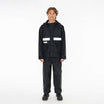
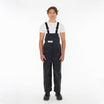
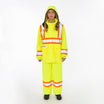
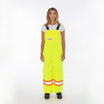
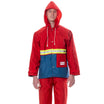
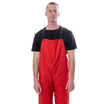
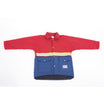
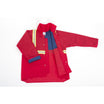
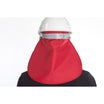

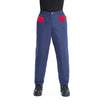
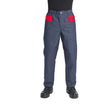
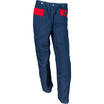
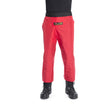
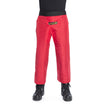
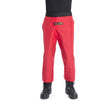
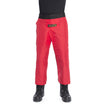
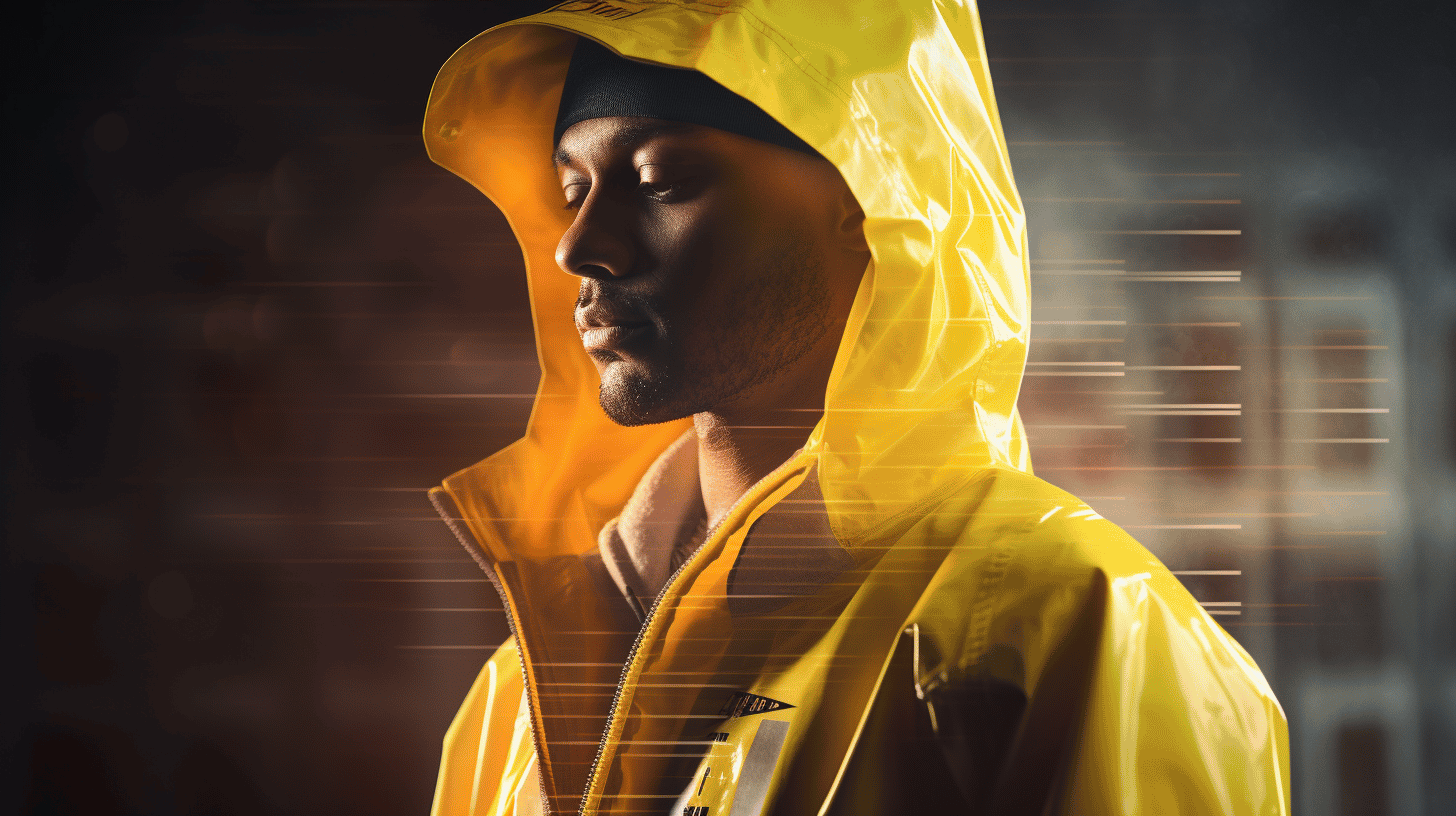

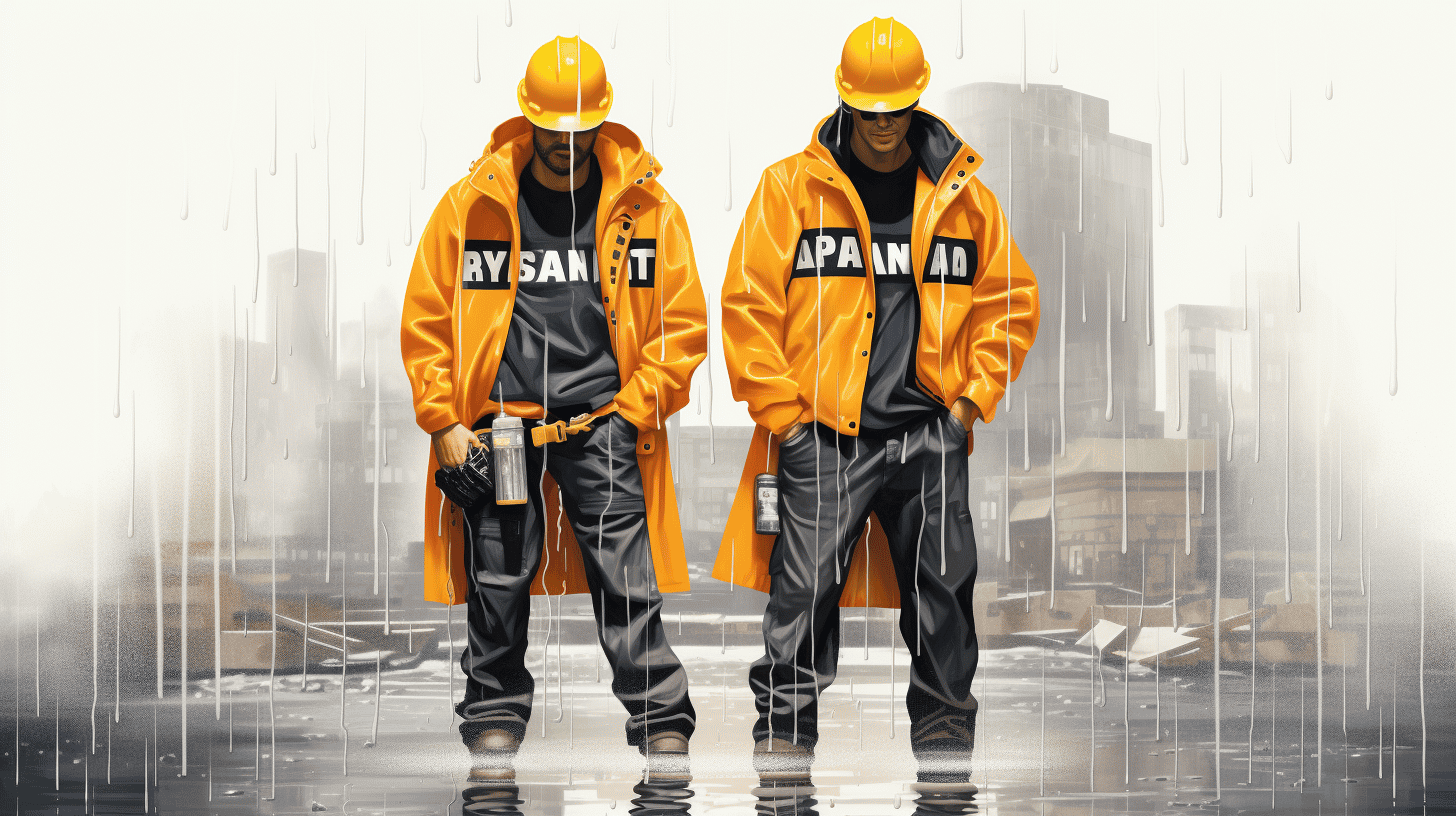
Leave a comment
This site is protected by hCaptcha and the hCaptcha Privacy Policy and Terms of Service apply.